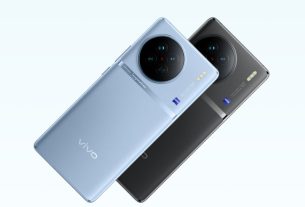Samsung has introduced ISOCELL HP1 and ISOCELL GN5 image sensors. ISOCELL HP1 is equipped with a 200-megapixel image sensor with 0.64-micron pixels and new pixel-binning technology called Chameleon Cell. ISOCELL GN5 is claimed to be the first image sensor to adopt all-directional focussing Dual Pixel Pro technology with two photodiodes in a single 1.0-micron pixel. It is a super-slim 1.0-micron 50-megapixel sensor that offers ultra-fast autofocussing. Samsung says that samples of Samsung ISOCELL HP1 and ISOCELL GN5 are available for vendors.
The Samsung ISOCELL HP1 sensor is said to be the first mobile sensor ever to support 200 megapixels. It is based on Samsung’s advanced 0.64-micron-sized pixels to bring ultrahigh resolution in a small smartphone packaging. The company says that the ISOCELL HP1 can take 8K videos at 30fps with minimum loss in the field of view.
Samsung ISOCELL HP1 features an all-new Chameleon Cell technology, a pixel-binning technology that uses a two-by-two, four-by-four or full pixel layout depending on the environment. In low light, the HP1 shifts into a 12.5-megapixel image sensor with large 2.56-micron pixels by merging 16 neighbouring pixels. The newly formed 2.56-micron pixel is capable of more light absorption and sensitivity, producing brighter and clearer photos in indoor settings or in the evening.
In bright outdoor environments, the sensor’s 200-million pixels can capture ultra-high-definition photography on smartphones. Samsung ISOCELL HP1 merges four neighbouring pixels to bring the resolution down to 50-megapixel or 8,192×6,144 pixels to take 8K (7,680×4,320 pixels) videos without the need to crop or scale down the full image resolution.
Coming to the Samsung ISOCELL GN5 sensor, it is said to be the first 1.0-micron image sensor to integrate Dual Pixel Pro all-directional autofocussing technology for ultra-fast autofocus. The new Dual Pixel Pro technology places two photodiodes within each 1.0-micron pixel of the sensor either horizontally or vertically to recognise pattern changes in all directions. With one million phase-detecting multi-directional photodiodes covering all areas of the sensor, ISOCELL GN5’s autofocussing becomes instantaneous, enabling sharper images in bright or low-lit environments.
In addition, Samsung says that the image sensor also makes use of Samsung’s Front Deep Trench Isolation (FDTI) to enable each photodiode to absorb and hold more light information, improving the photodiodes’ full-well capacity (FWC) and decreasing crosstalk within the pixel.
We can expect these sensors to ship on smartphones sometime in the later part of 2021 or early 2022. Samsung may also introduce the ISOCELL HP1 sensor on its rumoured flagship Samsung Galaxy S22 series as well.
For the latest tech news and reviews, follow Gadgets 360 on Twitter, Facebook, and Google News. For the latest videos on gadgets and tech, subscribe to our YouTube channel.
